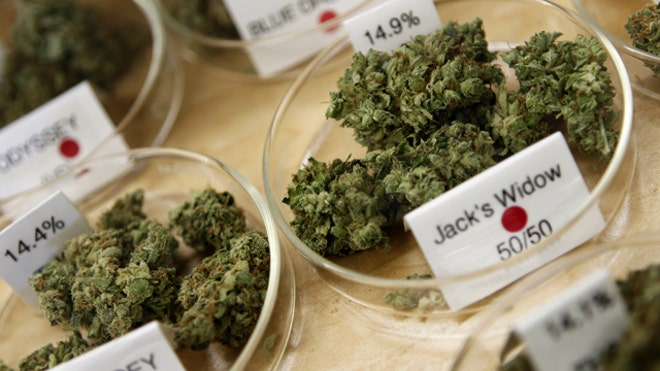“Researchers explained that regular marijuana users had significantly lower fasting insulin and were less likely to be insulin resistant, indicating they had better sugar control.
The study published in The American Journal of Medicine included data from 4,657 patients who had answered questions on drug use. According to the study, 579 of the patients were current marijuana users, 1,975 had used marijuana in the past and 2,103 had never used. Researchers measured all participants’ fasting insulin and glucose levels.
Researchers found that regular marijuana users had 16 percent lower fasting insulin levels than people who had never smoke marijuana. Marijuana users were also more likely to have a smaller waist circumference. Previous studies have linked a large waist circumference to diabetes risk.
The study also found that participants who reported using marijuana in the past had lower levels of fasting insulin and HOMA-IR and higher levels of high-density lipoprotein cholesterol (HDL-C). However, these correlations were weaker in people who reported using marijuana at least once, but not in the past thirty days. The findings suggest that the impact of marijuana use on insulin and insulin resistance exists during periods of recent use.
For centuries, marijuana has been used to relieve pain, boost mood and increase appetite. Now, medical marijuana is often used by patients suffering cancer, multiple sclerosis and other painful conditions.
If the latest findings are confirmed, researchers said the study could lead to the development of new diabetes treatments using marijuana’s compound active ingredient, tetrahydrocannabinol, or THC.
Past epidemiologic studies revealed that marijuana users had lower rates of obesity and diabetes mellitus compared to people who have never used the drug. Researchers said that previous findings suggest a link between cannabinoids and peripheral metabolic processes, but the latest study was the first to look at the relationship between marijuana use and fasting insulin, glucose, and insulin resistance.
“It is possible that the inverse association in fasting insulin levels and insulin resistance seen among current marijuana users could be in part due to changes in usage patterns among those with a diagnosis of diabetes (i.e., those with diabetes may have been told to cease smoking). However, after we excluded those subjects with a diagnosis of diabetes mellitus, the associations between marijuana use and insulin levels, HOMA-IR, waist circumference, and HDL-C were similar and remained statistically significant,” researcher Dr. Elizabeth Penner, said in a news release.
“These are indeed remarkable observations that are supported, as the authors note, by basic science experiments that came to similar conclusions,” American Journal of Medicine editor-in-chief Dr. Joseph Alpert wrote in an accompanying editorial.
“We desperately need a great deal more basic and clinical research into the short- and long-term effects of marijuana in a variety of clinical settings such as cancer, diabetes, and frailty of the elderly,” continues Alpert.” I would like to call on the NIH and the DEA to collaborate in developing policies to implement solid scientific investigations that would lead to information assisting physicians in the proper use and prescription of THC in its synthetic or herbal form,” he added.”
http://www.counselheal.com/articles/5381/20130515/smoking-marijuana-lower-diabetes-obesity-risk.htm









